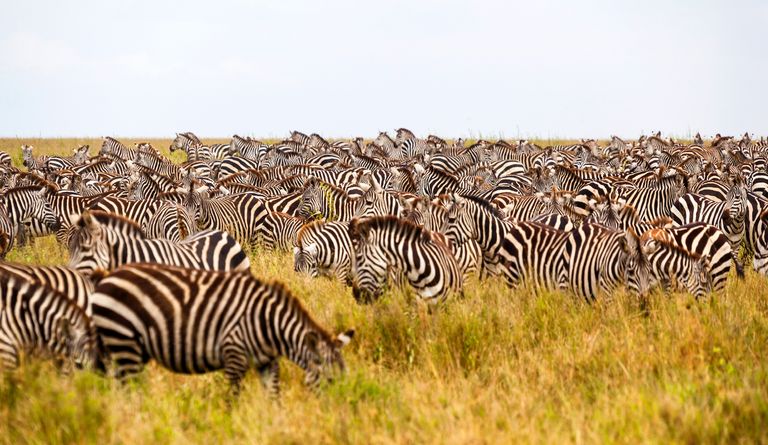How To Experience The Bucket List Spectacle of Tanzania's Great Migration
Known as the birthplace of humankind, Africa is home to some of the most exquisite natural sites across the world. In addition to natural phenomena such as Mount Kilimanjaro and the Victoria Falls, animals form a vital component of the African landscape. For those with a passion for wildlife, there is perhaps no greater sight to witness than the Great Migration. Taking place in Tanzania, the Great Migration is the largest animal migration in the world. Here's what you need to know in order to fully immerse yourself in what is truly a bucket list spectacle.
When does it happen?
In January, around two million wildebeests find themselves in the southeastern portion of the Serengeti National Park in Tanzania. Up until March, approximately half a million wildebeest calves are born, during which time they've moved southwards to the Ngorongoro Conservation Area. As April and May approach, drought causes the herd to move northwest into the central Serengeti. Once the dry season hits in June and July, the wildebeests move further westwards, after which they face the challenge of crossing the Mara River and entering the northern Serengeti, where many of them spread out across the land. Following the short rains of October, the herd makes its way back down to where it began its trek, passing by the official Serengeti Visitors’ Centre as the migration comes full circle.
What time to visit
Because the herd migrates in a circle around the Serengeti, it really is a year-round destination. Ultimately, there's no guarantee of the exact time that the herd will make it to each stage of its journey, so the likelihood of actually seeing them crossing a river together is slim. Still, so long as you choose to stay at a part of the Serengeti that the migration is expected to pass by at that time of year, you should be able to spot large herds of wildebeest in the vicinity. With this being said, you may be curious to know what the best places are to stay.
Where to stay
If you're planning a trip between December and May, then the southeast region of the national park should get you fairly close to the action. From May to July, the western corridor is the optimal place to be, while the Serengeti Mara area is ideal from July through to October. From October and November, the northern Serengeti and Lobo area should give you a priceless view of large herds of wildebeest migrating south. Now that you know where to go and when, let's take a look at some of the best lodges that you can stay at during your vacation.
Best accommodation to stay at
Asilia Africa is one company that offers a wide array of camps and lodges throughout the Serengeti National Park. In addition to its permanent safari camps, Namiri Plains, Dunia, and Sayari, Asilia also offers three mobile camps that move throughout the Serengeti throughout the year so that guests get the best view of the Great Migration. These camps are Ubuntu Migration Camp, Kimondo Migration Camp, and Olakira Migration Camp. The Four Seasons Safari Lodge Serengeti offers guests the chance to observe the migration from above by touring the Serengeti in a hot air balloon. This is in addition to amenities such as an on-site spa, infinity pool, and dinners in the bush. If you're looking for more of an authentic bush experience, then consider the Osero Serengeti Tented Camp, where you'll stay in an authentic yet luxurious tented accommodation in the middle of the national park.
